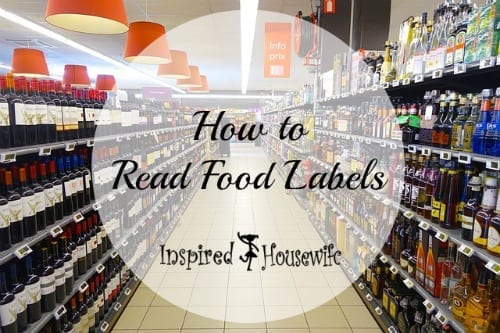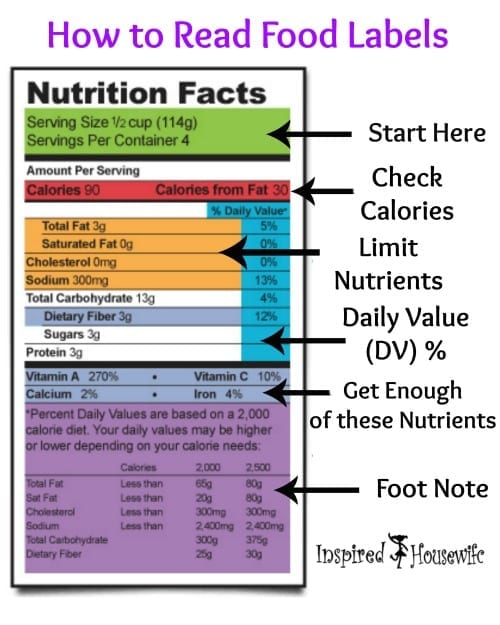I hope you are enjoying my 31 Days of Clean Eating, Meal Planning and Prep series, as helping people live healthier lives is a passion of mine. Today is day seven and when you start clean eating knowing how to read your food labels is key to understanding exactly what you are putting into your body.
They say if you cannot pronounce it or read it then you should not eat. Today I am going to share with you terms on how you can be a master at reading labels.
Food Labels: Where to Start?
When you begin reading food labels it can be daunting standing in the aisle at the grocery story wondering what it all means.
I remember feeling that many times when I was trying to decipher what everything meant.
The key parts to a food labels are ingredients, serving sizes, nutritional facts, and DV or daily values.
Many times you need to be careful when reading labels as descriptive words as sugar free, all natural, fat free, low fat, and many others can be misleading.
Ingredients:
They are the make up of what is in the food item and what nutrients in it.
If it seems healthy based on the the nutritional information, but the ingredients are not pronounceable or it is full of chemicals then it probably is not that healthy.

Calories:
This will tell you how many calories are in a serving size. It will also tell you how many of these calories are from fat.
As a general rule no more than 25-25% should come from fat.
Cholesterol:
This number tells you how much cholesterol is included in one serving size of an item.
It does not differentiate from cholesterol from saturated or unsaturated fats.
Total Fat:
Total fat will list the types of fats in a total serving size of food. Use fats in moderation as some is good for you, but not tons of it.
Sodium:
Like sugar, sodium, aka salt, is found naturally in many foods.
Dietary Fibers:
Dietary Fibers are an important ingredient to our nutrition. It aids in digestion and bowel movements.
%Daily Value:
The daily % value (vitamins and minerals) is based on 2000 calorie a per day diet which may not been the amount of calories suitable for your body.
Serving Size:
This means the amounts shown on the label refer to a single serving.
Sugars:
When sugars are listed on the food label it does not distinguish between the naturally occurring sugars or added sugars.
When in doubt read the ingredients for the source of the sugar.

Once you get the hang of reading labels it does become easier
One great tip is when you are in your grocery store only shop the outside of the store.
Most of the processed foods with ingredients you do not want to feed your family tend to be in the middle of the store.
The key is if you cannot pronounce it, you stay away from it.
Use what you have read here and go start making more healthy changes for your family.
My motto is “Eat Real Food, Not Fake!”
Tomorrow, I plan to share with you some easy tips to stock your pantry with clean foods.
If you have missed my earlier posts don’t forget to go back and read them.
You can also subscribe to not miss another post!
